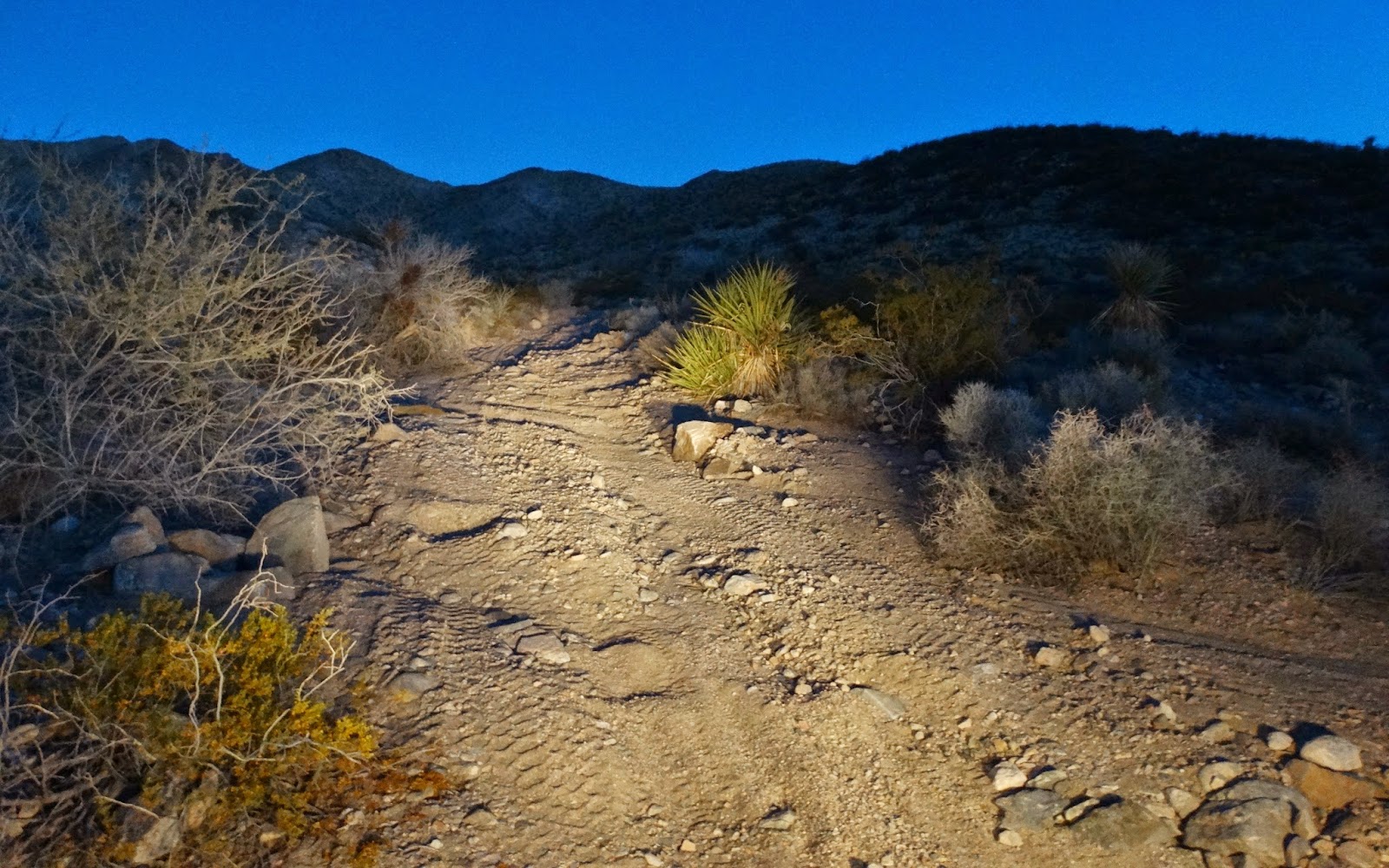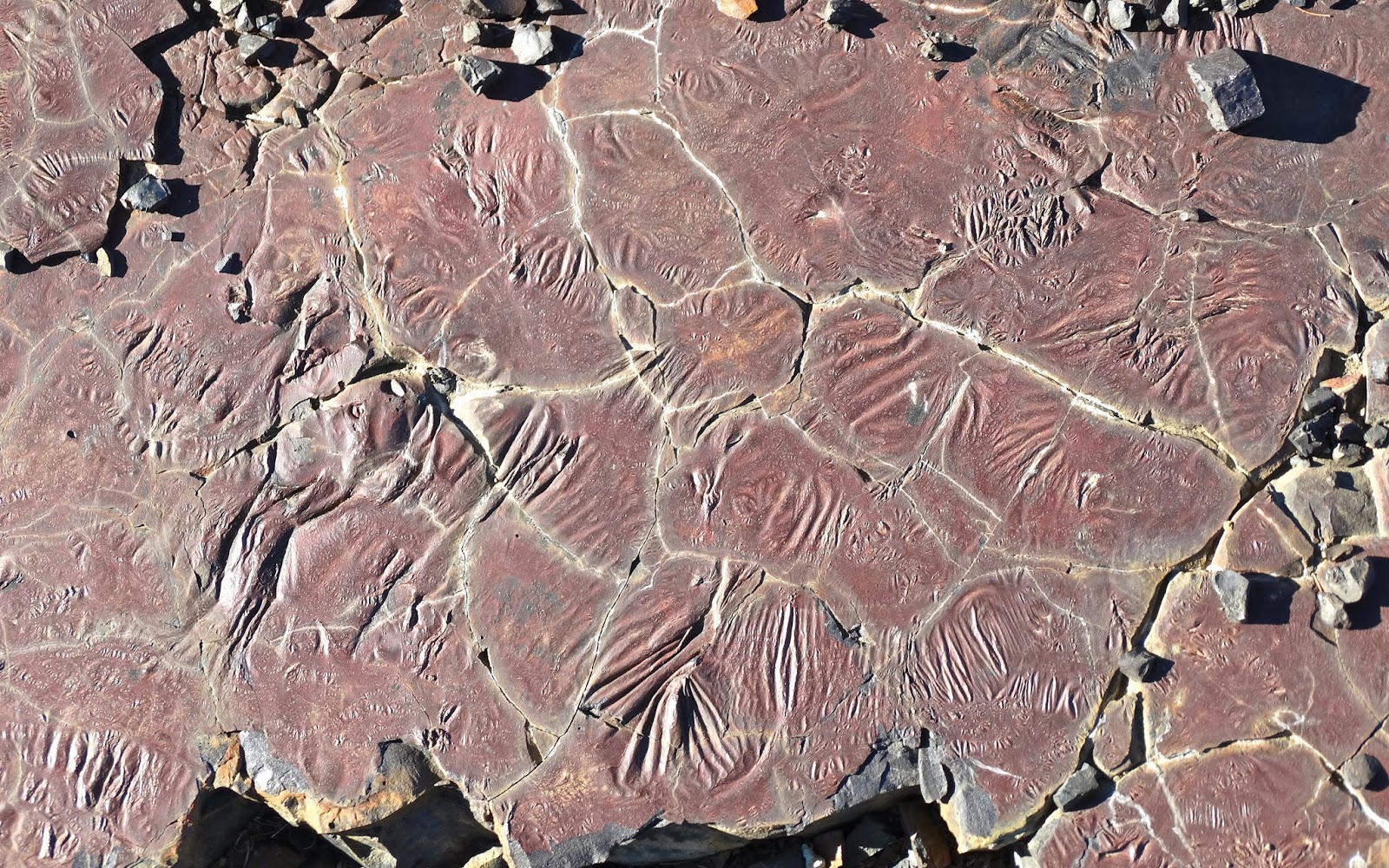Drove past LORSTA Searchlight. Video of the station in operation here. The station was decommissioned in 2010 and the antennas are now gone. Anyone out there remember using LORAN? It was the standard of navigation for more than 40 years before GPS. Here is a video of how it worked.
We continued east into the Newberry Mountains. Devil's Thumb on left, Spirit Mountain on right, poking their summits into the orange rays of the sunset.
Our route was a short cut that took us down an easy 4x4 road to Empire Wash.
As darkness fell we reached the boundary of the Lake Mead National Recreation Area.
The road had a couple of small washouts and was fun to drive in the dark but we were disappointed to not see the scenery. Early sunsets are one of the downers about exploring the desert during winter.
At the eastern end of Empire Wash we turned left onto the Mead-Davis Powerline Road. After a roller-coaster ride up and down no-name washes we arrived at Nellis Cove.
We set up camp alongside a dark Lake Mohave with the lights of Laughlin to the south.
Dawn at Nellis Cove on the western shore of Lake Mohave.
We brought our inflatable kayak to paddle the lake but the wind was gusting and the waves were rough even in our cove.
After lunch I walked the shore to a cove to the south. Shot this panorama of Nellis Cove during my return.
Later in the afternoon a few ducks landed in the lee of a small peninsula.
A weather front started to move in, so I turned on my 2-meter radio and checked the NOAA forecast on 162.425. Snow was predicted above 2,500 feet in the local mountains. The question; stay by the lake for drizzling rain or drive into the mountains for blowing snow?
It took us less that 20 minutes to break camp and begin our drive to a higher elevation for blowing snow.
We choose to camp at Christmas Tree Pass. Seemed like a good place to wait for a snow storm.
Dawn at Christmas Tree Pass.
The decorations on the nearby flora seemed more appropriate in the snow.
After a late breakfast we broke camp.
Driving east down Christmas Tree Pass Road headed for Laughlin. After five nights in the camper it was time for a motel.
View of the Newberry Mountains from the window of our room.



























































































